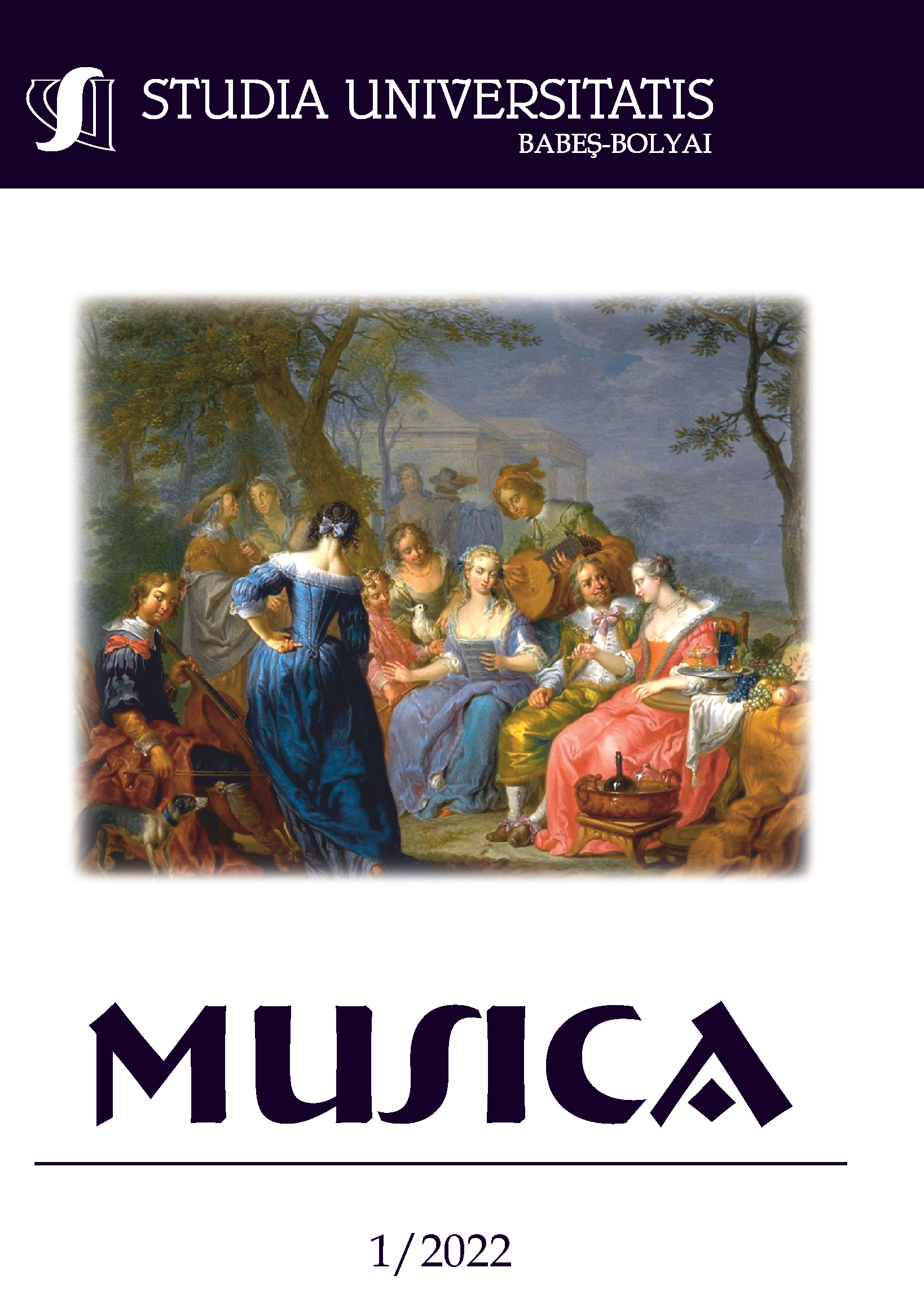IN DIALOGUE WITH IMPRESSIONISM: "JEUX D’EAU" BY MAURICE RAVEL
DOI:
https://doi.org/10.24193/subbmusica.2022.1.18Keywords:
Ravel, Jeux d’eau, Impressionism, piano music, ludic, duplicationAbstract
Jeux d’eau, created in 1901, is Ravel’s first piano masterpiece, that of a 26-year-old composer who has just left the Conservatoire. The work surprises with the charm of writing, the playfulness of expression, the maturity of creative thinking and the complexity of elaboration. Beyond the fact that it marks a turning point in Ravel’s career, it is no exaggeration to say that it is both a milestone for piano literature in general and for the impressionist one. Our study focuses on the analysis of Ravel’s writing style and construction in the mirror of musical Impressionism, pointing out, where appropriate, the innovations that foreshadow representative compositional solutions for the avant-garde of the first half of the 20th century and beyond.
REZUMAT. ÎN DIALOG CU IMPRESIONISMUL: JEUX D’EAU DE MAURICE RAVEL. Lucrarea pentru pian Jeux d’eau compusă în anul 1901 este prima capodoperă a lui Ravel, un compozitor de numai 26 de ani care abia părăsit Conservatoire-ul. Lucrarea surprinde prin farmecul scriiturii, ludicul expresiei, maturitatea gândirii creatoare și complexitatea elaborării. Dincolo de faptul că marchează o cotitură din perspectiva carierei lui Ravel, nu este o exagerare să afirmăm, că ea este deopotrivă un punct de hotar pentru literatura pianistică în general și cea impresionistă în special. Studiul nostru investighează elementele de scriitură și construcție raveliene prin prisma impresionismului muzical, semnalând după caz și inovațiile ce prefigurează soluții componistice reprezentative pentru avangarda din prima jumătate a secolului 20 și nu numai.
Cuvinte cheie: Ravel, Jeux d’eau, impresionism, muzică pentru pian, ludic, duplicare
References
Cortot, Alfred, La Musique française de piano: sér. Maurice Ravel. Saint-Saëns. Vincent d’Indy. Florent Schmitt. Déodat de Séverac, Tom. II, Rieder, Paris, 1932.
Fodor Attila, „The osmosis of diversity in Maurice Ravel’s work”, In Studia Universitatis Babeş-Bolyai, Musica, LV, 1, 2010, p. 131-143.
Ivry, Benjamin, Maurice Ravel: A life, Welcome Rain Publishers, New York, 2000.
James, Burnett, Ravel, his life and times, Hippocrene Books, New York, 1983.
Larner, Gerard, Maurice Ravel, Phaidon Press Limited, London, 1996.
Messiaen, Olivier, Technique of My Musical Language [transl. by John Satterfield], Alphonse Leduc, Paris, 1956.
Orenstein Arbie [ed.], A Ravel Reader: correspondence, articles, interviews, Columbia University Press, New York Oxford, 1990.
Orenstein, Arbie, Ravel: Man and musician, Columbia University Press, New York and London, 1975.
Downloads
Published
How to Cite
Issue
Section
License
Copyright (c) 2022 Studia Universitatis Babeș-Bolyai Musica

This work is licensed under a Creative Commons Attribution-NonCommercial-NoDerivatives 4.0 International License.



